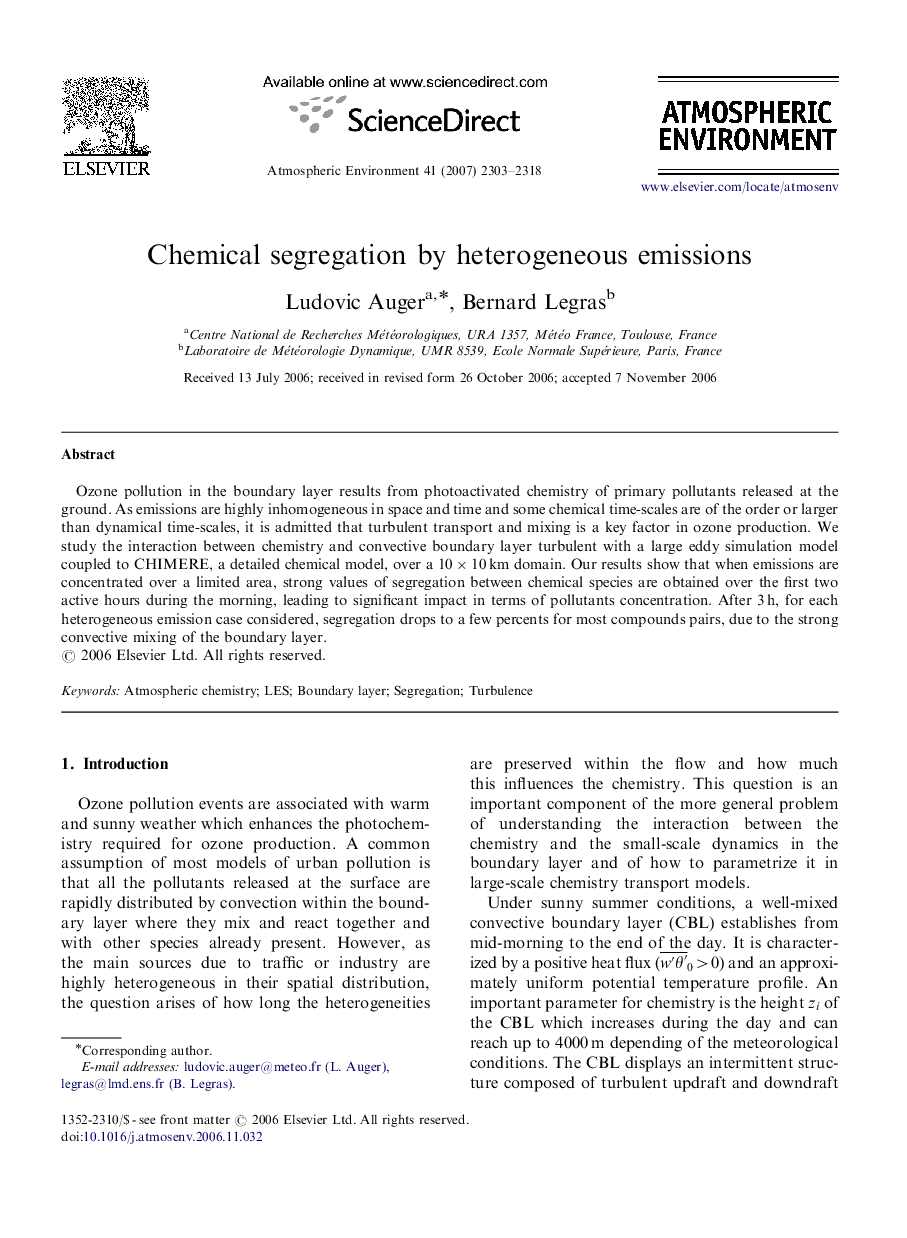| Article ID | Journal | Published Year | Pages | File Type |
|---|---|---|---|---|
| 4443927 | Atmospheric Environment | 2007 | 16 Pages |
Ozone pollution in the boundary layer results from photoactivated chemistry of primary pollutants released at the ground. As emissions are highly inhomogeneous in space and time and some chemical time-scales are of the order or larger than dynamical time-scales, it is admitted that turbulent transport and mixing is a key factor in ozone production. We study the interaction between chemistry and convective boundary layer turbulent with a large eddy simulation model coupled to CHIMERE, a detailed chemical model, over a 10×10km domain. Our results show that when emissions are concentrated over a limited area, strong values of segregation between chemical species are obtained over the first two active hours during the morning, leading to significant impact in terms of pollutants concentration. After 3 h, for each heterogeneous emission case considered, segregation drops to a few percents for most compounds pairs, due to the strong convective mixing of the boundary layer.
